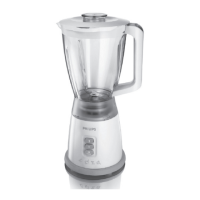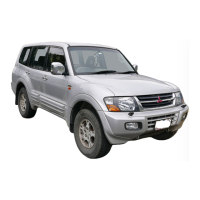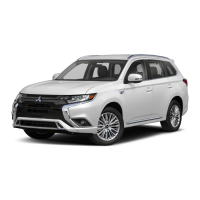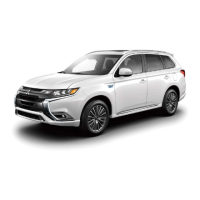Chapter 10 Suspension and steering systems
IQ-5
1
6’
2.3a Typical 2WD stabilizer and strut bar components
1 Bump stop/&rut bar bolts 4 Strut bar bracket
2 Strut bar 5 Stabilizer bracket
3 Bushing 6 Stabilizer bar
1
General information
Refer to illustrations 1.1 and 1.2
Thefrontsuspensionon thevehiclescovered bythismanualisaninde-
pendent type, made up of upper and lower arms, torsion bars (4WD mod-
els)orcoilsprings(2WD models), balljoint-mountedsteering knucklesand
shockabsorbers(seeillustratlon).Somemodelsareequippedwithasta-
bilizer bar to limit body roll during cornering.
The rear suspension consists of the rear axle housing, leaf springs and
shock absorbers
(see illustration).
Some later models use coil springs
with a trailing arm and track rod arrangement to locate the axle. Informa-
tion regarding axles and the rear axle housing can be found in Chapter 8.
The steering system is composed of a steering column, steering gear,
Pitman arm, relay rod, two tie-rod assemblies and an idler arm. Some
models feature power assisted steering, which includes a belt-driven
pump and associated hoses to provide hydraulic pressure to the steering
gear.
,
Frequently, when working on the suspension or steering system cpm-
ponents, you may come across fasteners which seem impossible to loos-
en. These fasteners on the underside of the vehicle are continually
subjected to water, road grime, mud, etc., and can become rusted or “fro-
zen,“making them extremely difficultto remove. In orderto unscrewthese
stubborn fasteners without damaging them (or other components), be
sure to use lots of penetrating oil and allow it to soak in for a while. Using
a wire brush to clean exposed threads will also ease removal of the nut
or bolt and prevent damage to the threads. Sometimes a sharp blow with
a hammer and punch is effective in breaking the bond between a nut and
bolt threads, but care must be taken to prevent the punch from slipping
off the fastener and ruining the threads. Heating the stuck fastener and
surrounding area with a torch sometimes helps too, but isn’t recom-
mended because of the obvious dangers associated with fire. Long break-
erbarsand extension, or”cheater,” pipes will increase leverage, but never
use an extension pipe on a ratchet-the ratcheting mechanism could be
damaged. Sometimes, turning the nut or bolt in the tightenbg (clockwise)
direction first will help to break it loose. Fasteners that require drastic mea-
sures to unscrew should always be replaced with new ones.
Since most of the procedures that are dealt with in this Chapter involve
jacking up thevehicle and working underneath it, agood pairofjackstands
will be needed. A hydraulic floor jack is the preferred type of jack to lift the
vehicle, and it can also be used to support certain components during vari-
ousoperations.
Warning:
Never, underanycircumstances, relyonajack
to support the vehicle while working on it Wheneverany of the suspension
or steering fasteners are loosened or removed they must be inspected
and, if necessary, rep/aced with new ones of the same part number or of
original equipment quality and design. Torque specifications must be fol-
2.3b Typical 4WD stabilizer bar components
1 cap 4 Stabilizer
bar
link
7 Bracket
2 Stabilizer bar bushing 5 Stabilizer bar 8 Washer
3
Cap
6 Bushing
lowed forproperreassemblyandcomponenf retention. Neveratfempt to
heatorstraightenanysuspension orsteering component Always replace
them with new ones.
2 Front stabilizer bar - removal and installation
Refer to illustrations 2.3a and 2.3b
Warning:
Wheneveranyofthesuspensionorsteeringfastenersareloos-
enedor removed, they must be inspectedand, if necessary, replaced with
newonesofthesamepartnumberoroforiginalequipmentqualityandde-
sign. Torque specifications must be followed for proper reassembly and
component retention.
,Removal
1
Raise the front of the vehicle and support it securely on jackstands.
Apply the parking brake.
2 On 2WD models,
remove the strut bars (see Section 4).
3 Removethestabilizerbar-to-lowerarmlinknutsandbolts, noting how
the spacers, washers and bushings are positioned (see
illustrations).

